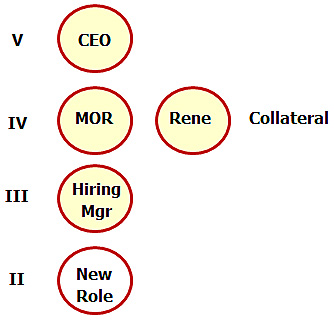From the Ask Tom mailbag –
Question:
I was hired in an HR role about six months ago. So, I have settled in. I know who the players are and have made a bit of headway. I published a new employee handbook, negotiated the renewal on our health insurance plan and straightened out a very messy vacation policy. But, I still don’t feel like I am part of the company. There is so much more to be done, but, I don’t get invited to meetings with top management. Most often, I find myself in my office listening to some teary eyed employee who feels they were mistreated by a co-worker. Is this all there is to this job?
Response:
This trap is set in most companies I visit. The HR role feels necessary, but most organizations do not know how to define it, and settle for a role below the level of work they truly need, or outsource this function to their payroll company, from a lack of understanding or simple frustration. A recent article in Forbes, describes the problem. –
CEOs identified talent supply and retention as their No. 1 “hot button” issue in 2016, and talent shortages are cited as one of the primary constraints on corporate growth. Coupled with the pricey tab that employees’ salaries represent – salaries can account for up to 80% of operating costs – HR cannot afford to cling to its compliance and administrative heritage instead of shifting to a more strategic contribution. Most organizations concur – 85% of global companies believe that HR must undergo a transformation in order to adequately address emerging business priorities.
The article continues with some generic thoughts, but nothing to assist you in an emerging HR role.
Looking at levels of work will bring us more insight into what is necessary. If people are our most important asset, the organization has to figure this out. Otherwise, the search for talent will become the biggest constraint, choking off growth and creating chaos.
HR role, Stratum I level of work (Time-span = 1 day to 3 months outlook)
This is all the compliance filing that must be completed and properly organized. I-9 forms, employment applications, health insurance registration, COBRA forms. It is enough to make your head spin, but has to be done. The good news, there are many software platforms (cloud-based) that can help store all this stuff. Payroll services can be helpful by providing the necessary forms and a place to electronically keep them. But recognizing this level of work does not mean the company would survive an audit or actually have the documentation to defend a claim or lawsuit.
HR role, Stratum II level of work (Time-span = 3 months to 12 months outlook)
This is the minimum level of work that will assist the company in surviving that audit or defending that claim. Stratum II managerial level of work is described as make sure work gets done. It is one thing to have a health insurance form available to be filled out by a new hire, but it is at level II, that we ensure the form was filled out correctly, completely and within the time deadlines required. It is this level of work that conducts self-audits, that creates a filing system (using cloud-based software or a payroll service) to make sure that all compliance issues are accurate, complete, on-time and appropriately filed. Do not entrust this to an outside service or software. This is an internal role. If a health insurance form is not filed on-time and a new hire is diagnosed with cancer, it is the company that is on the hook.
But if this all that HR is, the company is missing the boat and truly does not understand what is necessary.
HR role, Stratum III level of work (Time-span = 12 months to 24 months outlook)
This is where the leverage for HR begins. If Human Resources is really about humans, then it is time to dig in and create the system of acquiring talent. This is a system like any other system in the organization, yet one that receives the least attention (except by the HR professional in the role). Most companies can see the necessity of a capital equipment purchase. They look ahead, create flow charts and make budgets to buy that capital equipment. Most companies overlook the necessity of workforce planning, defining the level of work in necessary roles. Most managers are too busy getting work done to spend sufficient time on the people side until it is too late, the project is under contract and we suddenly do not have the personnel capacity to perform the work. The biggest contribution from HR is to instill the discipline, with every functional manager, to make sure they anticipate their human capital needs looking 1-2 years into the future. That look-ahead must be backstopped with a talent acquisition system that delivers the right team at the right time, with the required capability, trained up and ready to go.
HR role, Stratum IV level of work (Time-span 2 years to 5 years outlook)
But, for HR, this is where the real game is played and most companies never see this. Stratum IV managerial roles contemplate all the existing systems and sub-systems and integrate them together. This is an integration role looking out 2-5 years in the future. This is a strategic role. HR professionals that work at this level, DO get invited to senior management meetings, not to sit in the back of the room, but front and center. The success of any company in building a business model, shifting strategy, responding to new markets, depends on the right people in the right roles.
Funny, that is what Jim Collins told us in Good to Great. Unfortunately, he shrugs that off. “I am not going to belabor all five levels (of work) here, as levels 1-4 are self explanatory and discussed extensively by other authors.”
Shame on you, Jim Collins, this is where the game is played. Most companies fail because they do not truly understand levels of work and fail to field the team required to execute.
And this is where HR professionals can make great contribution, sitting at the strategic table, asking the questions and defining the people system required to support the best laid plans of mice and men (and women). -Tom

